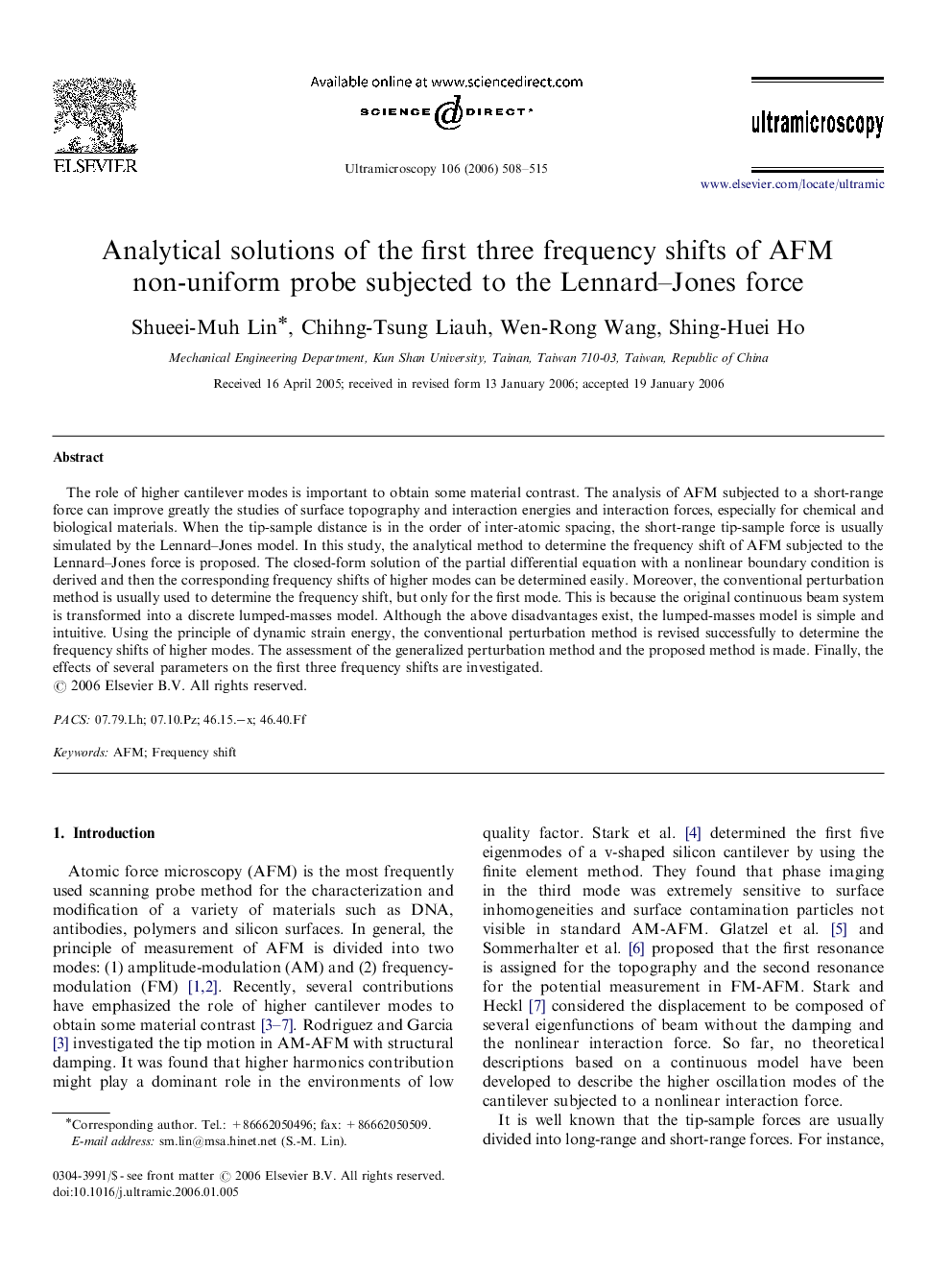| Article ID | Journal | Published Year | Pages | File Type |
|---|---|---|---|---|
| 1678489 | Ultramicroscopy | 2006 | 8 Pages |
The role of higher cantilever modes is important to obtain some material contrast. The analysis of AFM subjected to a short-range force can improve greatly the studies of surface topography and interaction energies and interaction forces, especially for chemical and biological materials. When the tip-sample distance is in the order of inter-atomic spacing, the short-range tip-sample force is usually simulated by the Lennard–Jones model. In this study, the analytical method to determine the frequency shift of AFM subjected to the Lennard–Jones force is proposed. The closed-form solution of the partial differential equation with a nonlinear boundary condition is derived and then the corresponding frequency shifts of higher modes can be determined easily. Moreover, the conventional perturbation method is usually used to determine the frequency shift, but only for the first mode. This is because the original continuous beam system is transformed into a discrete lumped-masses model. Although the above disadvantages exist, the lumped-masses model is simple and intuitive. Using the principle of dynamic strain energy, the conventional perturbation method is revised successfully to determine the frequency shifts of higher modes. The assessment of the generalized perturbation method and the proposed method is made. Finally, the effects of several parameters on the first three frequency shifts are investigated.
